Between March 14th and 18th, 2022, I visited NINO thanks to an Incoming Mobility Grant. The trip was connected to my current PhD research “Weaving the Social Fabric: Women and Trade Networks in Ancient Mesopotamia”. In my doctoral studies, I investigate how commercial practices, specifically the long-distance trade between Mesopotamia and Anatolia during the Old Assyrian period, affected family organization. The corpus of this study is constituted by the merchant family archives of (a) Innaya and Imdī-ilum, (b) Pūšu-kēn and (c) Elamma. By working with these three, my aim is to shed light on how the women from these families inserted themselves in this changing scenario.
The De Liagre Böhl Collection holds approximately 150 tablets from the Old Assyrian period. Among them are a few dozen tablets that belonged to the archives of Innaya, Imdī-ilum, and Pūšu-kēn. These tablets – some of them very well preserved – provide important information about the lives of these families. A few tablets deal with some of the women from these families: Ištar-bāšti and Zizizi (LB 1217), Tarīš-mātum and Bēlātum (LB 1259), Tarām-Kūbi and Šīmat-Aššur (LB 1296).
The larger part of the Old Assyrian tablets in the Böhl Collection are unpublished; they are in preparation for publication by Dr. Jan Gerrit Dercksen and Prof. Klaas Veenhof. After planning my visit with Dr. Willemijn Waal and Drs. Carolien van Zoest, over the first three days I was able to consult and work with the selected cuneiform tablets. All the work with the tablets was supervised by Dr. Dercksen, who spared no efforts to be available during the entire period and also to discuss aspects of my PhD research. During my stay at NINO, I also had the opportunity to meet with Prof. Veenhof, who was extremely kind in providing unpublished data from his work with the tablets in the Böhl Collection.
In my PhD dissertation, I will present the first Portuguese translation of approximately 90 letters interchanged by the women from these families. Two of those letters are in the De Liagre Böhl collection: LB 1217 and LB 1259. These tablets have already been transliterated and translated(1).
Over the last two days of my visit, I undertook a bibliographical research in the NINO Library, one of the largest collections in Assyriology in Europe. The Mobility Grant allowed me a unique opportunity to consult publications that are not available in libraries in Brazil or in France.
Being able during this week of my visit to discuss in person with Dr. Dercksen and Prof. Veenhof, relevant references in the field, to access NINO’s library, as well as to be able to have hands-on experience with the tablets was extremely fruitful for my academic formation. Finally, I leave here my gratitude to NINO for the research support and towards those, professors and staff alike, who allowed me to bring my work to completion.
Anita Fattori
(1) The drawing of tablet LB 1259 + VAT 09270 was published in VS 25, 59. Regarding LB 1271, its first transliteration was published by J. Lewy, Ištar-ṣâd and the Bow Star, AS 16 (1965), p. 275 and later by M. Ichisar, Les Archives cappadociennes du marchand Imdīlum (1981), p. 23. More recently it was translated by C. Michel, Correspondance des marchands de Kaniš au début du IIe millénaire avant J.-C. (2001), p. 356 and transliterated and translated by C. Michel, Women from Aššur and Kaniš (2020), 192. The transliteration of this document was kindly made available by K. Veenhof, which shows the same remarks that I noticed on my visit to Leiden – especially regarding the sign ki which is graphed in a particular way and can be confused with the sign šu.
